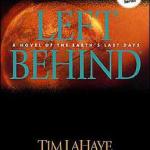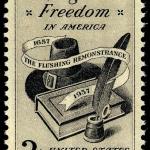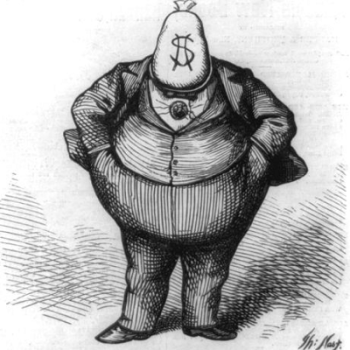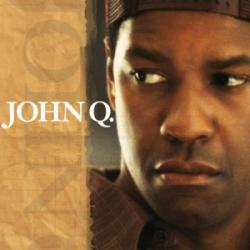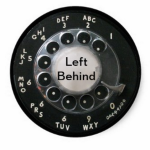I’ve been reading about J.D. Vance, the Republican nominee for vice president, and so I’m thinking again about the Flushing Remonstrance.
Vance is an admirer and follower of several theorists who are described as skeptics of liberal democracy and as “post-democratic” thinkers and intellectuals. So I decided to read some of their intellectual thoughts.
As skeptics and critics of liberal democracy, what is it that they want to see liberal democracy replaced with? What’s their innovative big new idea?
The short answer is they don’t have one. They want to see liberal democracy replaced with what came before it.
That’s a problem because everybody hated what came before it. Everybody.

Vance’s gurus all start with the notion that liberal democracy was invented by the philosophers of the Enlightenment and then they critique those philosophers to argue that the Enlightenment — and, therefore, liberal democracy itself — was a wrong turn and a bad idea and that we should all go back to monarchy and feudalism and church-state synthesis.
The outrageousness of their conclusions is so startling — monarchism! sectarian integralism! ethnic and religious hierarchy! — that we can get distracted from their dim-witted misapprehension and thick-witted misrepresentation of history.
The idea of liberal democracy did not come from a handful of philosophers writing treatises in their ivied towers. It came from almost everybody who had to live through three centuries of war, instability, uncertainty, and religious turmoil. People did not enjoy living through three centuries of war, instability, uncertainty, and religious turmoil. It was bad.
Basically, every time your country got a new king or queen, or lost a war, you’d have to switch religions. That sucked.
And it sucked for everybody. Historians often write about the persecution of religious “non-conformists” during those centuries, but it was no picnic for the conformists either, because what you were required to conform to was constantly changing, reversing, then reversing back. One day you and all of your neighbors are obediently worshipping the way your king and country expects and requires and the next day, or the next month, that same behavior could get you killed or imprisoned or impoverished. Sometimes you’ve barely finished building your new church before you’re told to burn it down and rebuild the old one.
Nobody liked living that way. It was exhausting and confusing and terrifying — all the time. It took a while for those philosophers to come along and map out an alternative, but for generations before that the mass sentiment was We Do Not Want to Live Like This and We Should Not Have to Live Like This. Long before any of those philosophers started writing about the particulars of pluralistic liberal democracy, the heartfelt, widely held opinion was that life would be a lot better for everybody if we didn’t have to change religions every time we change governments.
Even the winners of the various religious wars and succession struggles eventually came to see this. They came to see that “victory” was always tenuous and temporary — Henry to Jane to Cromwell to Charles, etc. But they also came to realize that even “winning” was intrusive and meddlesome and intolerably fraught. Even under a Catholic or Puritan government, you could never just live your life as a Catholic or Puritan, you’d have to prove you were a good one. And often the way that you’d be asked to prove you were a good one was by ratting our your neighbors so that you could witness them being punished as an example and a constant threat to you.
This was no way to live and everybody knew it.
Which brings us to the Flushing Remonstrance. This was in 1657. John Locke was still a student. Montesquieu and Rousseau hadn’t been born yet. The Flushing Remonstrance was not a work of Enlightenment philosophy. It was just a bunch of normal people collectively saying, “No. Not this again. We refuse to go on living like this.”
They didn’t philosophize and thereby invent new structures of pluralistic liberal democracy. They just protested and thereby invented New York City.
This was the work of normal people who had had enough. They had crossed an ocean to escape the endless religious turmoil in England, settling in a Dutch colony because the Netherlands seemed at least to be trying something new, uniting its Catholic and Protestant lands without demanding the mass conversion of either. So these English settlers, mostly Protestant “non-conformists,” got permission to start a new life in New Amsterdam.
Alas for them, the colonial governor of New Amsterdam, Peter Stuyvesant, was still wedded to that miserable old idea of government as the sponsor and promoter of the One True Religion. In Stuyvesant’s case, that One True Religion was Dutch Reformed Calvinism.
Peg-leg Pete, like the ayatollahs of Massachusetts, decreed that Quakers and Jews would not be welcome in New Amsterdam. (He also cracked down on Catholics and Lutherans.) The Flushing Remonstrance was a rejection of that decree. This rejection wasn’t really based on any philosophizing about democratic accountability or the consent of the governed. It was mostly just “Hell no. We are not doing this again. This always sucks for everybody and everybody hates this and everybody knows this is no way to live so, just, no.”
They had had it up to here with governments dictating people’s religion and requiring people to change their religion and so, they decided, from now on, religion was off the table.
That, right there, is the thing that J.D. Vance and all of his anti-democracy gurus do not understand about liberal democracy. That is the prerequisite and foundation of the whole thing — taking things off the table.
This is what George W. Bush and Donald Rumsfeld and Paul Bremer so disastrously failed to understand when “promoting democracy” in Iraq. Democracy, they seemed to think, was simply a matter of having an election to choose your government.
And so, as quickly as possible, they held an election — an election in which nothing was off the table. Or, in other words, an election in which everything was at stake. Without a First Amendment or a Bill of Rights or even so much as a Flushing Remonstrance, that election was doomed to become a slightly less violent version of the Protestant/Catholic wars and succession struggles that had roiled Europe for centuries. Religion was on the ballot. Religion should never be on the ballot.
The writers and signers of the Flushing Remonstrance could have predicted what such an election would mean: conflict, violence, civil war. Mary Dyer and Anne Hutchinson and Roger Williams could’ve told them the same thing.
When religious freedom — whether or how you must worship — is contingent on the next government, and the next, and the next, then life always sucks for everybody.
Religious freedom should not be contingent on the next government. It should be off the table.
A lot of things should be off the table. Then, and only then, we can vote safely without life having to suck for everybody.
This, in a nutshell, is what J.D. Vance and his anti-democratic, anti-liberal gurus do not understand about the liberal democracy they oppose.


